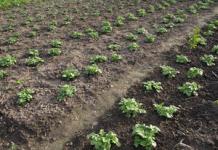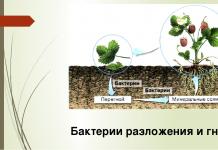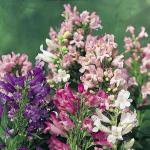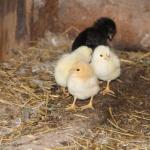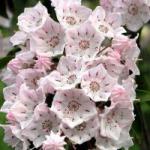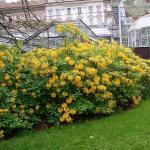It is generally accepted that cow dung is the best in terms of nutrient content. But there is a much richer type of organic matter - it is sheep and horse droppings. Why sheep manure as a fertilizer should be considered separately: because now livestock farms are actively developing that grow sheep for wool and meat. Hence, it is more common than horse droppings.
Buying waste from a private farmer, which he has nowhere to put, is a matter of one day. But after that, it is necessary to properly store the sheep manure for use in the summer cottage.
Useful properties of animal organic matter
Intensive farming, which gardeners do on their plots, takes a large amount of nutrients from the soil, especially nitrogen and potassium. In a natural way, soil bacteria cannot create enough humic acids for all plants to grow and bear fruit.

To get a rich harvest, you need to accelerate the reproduction of soil microorganisms and add nutrition to them. Bacteria consume plant residues, water and at the same time actively multiply. If these substances are not added to the soil, the activity of the microflora will decline, and with it the yields.
The use of sheep manure as a fertilizer for the soil, according to agronomists and amateur gardeners, contributes to the formation of humus in the soil - a nutrient. The basis of humus is humic acids, with the help of which potassium and phosphorus penetrate the root system.
Sheep manure is a concentrated fertilizer, so it must be applied correctly and try not to overdose. On sandy soil, its action lasts 2 - 3 years, on clay soil - up to 5 years.
Fertilizer composition - comparison with other types of organics
In sheep dung little water - only 65%. For comparison, in mullein and pork - up to 80%. Organic substances, respectively, are also higher - up to 33%. The biggest indicator nitrogen - 0.8%. Potassium - 0.7%. Least of all phosphorus - 0.2%. But any manure contains little phosphorus, so for a balanced plant nutrition it is added in the form of superphosphate, phosphate rock.
When fresh sheep manure is used as a fertilizer, soil nitrogen-fixing microorganisms begin to process it.

At the same time, a product of their vital activity is released - methane gas, which is dangerous for the root system. This is precisely the factor that makes it undesirable to fertilize the beds with fresh sheep manure.
Advantages of sheep dung as top dressing
Sheep droppings are hot types. When it decomposes, a large amount of heat is released. This happens with all types of manure, which contain little water, but a lot of organic matter. Mullein and pig manure are much weaker in this regard. They rot longer in the soil, so there is more nutrient loss.
Litter of small cattle is used for warming beds in the spring in a greenhouse and open ground. No type of manure gives such an effect. But it is necessary that the roots of the seedlings do not come into contact with the manure layer, since gases can completely destroy the plants.

Due to the small amount of water, the use of sheep manure is more economical. Per square meter, you need less dosages than the same mullein or pig excrement.
Goat and sheep droppings are suitable for all vegetable crops and berry bushes. Especially love his plants, which need a lot of nitrogen for growth - potatoes, tomatoes, gourds.
Ways to store manure from small cattle
Store valuable organic fertilizer in different ways. Someone prefers to compost it with plant residues, someone uses the cold method - rams it in a pile and closes the air. If you hold sheep droppings in the air for 6 months, its nutritional value will decrease due to the loss of nitrogen substances. The amount of useful substances is reduced by 50% if the manure lies year, by 75% - if 1.5 - 2 years.
Composting
To do this, you need to build a collar. You can immediately make two boxes:
- for cold storage;
- for hot composting.
The cold storage box is made without gaps so that the air does not activate the combustion processes. Litter is folded tightly and additionally compacted. From above it is covered with a layer of soil and a film. The earth retains nitrogen vapors, thereby preserving them. The temperature in such a box does not exceed 25 - 30 degrees.

The hot compost pile must be well ventilated, otherwise the activity of microorganisms will stop and the compost will turn sour.

Substances are stacked in layers, but not compacted, so that bacteria can breathe and process organic matter. The box should have 40% manure and 60% all other substances- plants, garden waste, leaves, green manure and soil.
The temperature during heating of the compost rises to 75 degrees. This kills insect larvae, destroys weed seeds. The output is a dark-colored substance, loose and moisture-intensive. The process takes 9-12 months. To speed up, add a solution of bacterial preparations for the garden.
liquid forms
One third of a plastic barrel filled with sheep droppings and filled with water to the brim. When dissolved, mix and cover tightly so that air does not get inside. In this form, the fertilizer will stand until spring. Then it will be possible to breed and water the plants. The decomposition of organic matter will begin in the soil.
Use as a feed
To properly use sheep manure, you need to know exactly what kind of litter is available: fresh or rotted.
Fresh litter is used in the following cases:
- In the spring, they are scattered over the snow so that, together with melt water, the nutrients enter the soil. Excess nitrogen is then volatilized.
- 3 weeks before planting, fresh manure is dug up with soil and watered. This gives time for the organics to partially dissolve.
- In autumn, you can make fresh sheep manure for digging on empty beds. Until spring, organic matter will completely decompose and will be safe for plants.
Video: Processing sheep manure with EM-Vita
Semi-rotted litter is used:
- In the spring in liquid form 2 weeks before planting. So it will decompose faster.
- In summer, in liquid form for watering plants before flowering or during fruit set. You can add potassium sulfate, as plants during this period consume it in large quantities.
- In autumn, dry for digging.
Mature litter of sheep and goats:
- In the spring, dry immediately at the time of planting. It can be in every hole.
- Summer for watering.
- In autumn for embedding in the ground.
Humus is more suitable for making soil compositions when planting fruit trees, as it retains moisture well at the roots of seedlings. To increase the nutritional value of humus, mineral fertilizers, wood ash, and fresh litter in small quantities are added to it.
Liked the article? Share with your friends:
Hello, dear readers! I am the creator of the Fertilizers.NET project. Glad to see each of you on its pages. I hope the information in the article was helpful. Always open for communication - comments, suggestions, what else you want to see on the site, and even criticism, you can write to me on VKontakte, Instagram or Facebook (round icons below). All peace and happiness! 🙂
You will also be interested in reading:
Compared to mullein, sheep manure has a higher nitrogen content, which increases its ability to decompose even in heavy soils. However, a high nitrogen content can cause burns to the root system of plants. To avoid this, it is important to follow the technology of harvesting and storing this type of fertilizer.
Can it be used?
The main advantage of sheep manure is its versatility. It is applied both under fruits and vegetables, and under legumes, fodder and grain crops. Sheep manure has a beneficial effect on the yield of cherries, peaches, apricots, as well as tomatoes and onions.
Main advantages:
- higher efficiency compared to mullein;
- no unpleasant odor after drying;
- low application rates and, accordingly, economical consumption;
- Can be used as a biofuel for heating greenhouses.
The disadvantage of this type of fertilizer is the danger of burning the roots and stems of plants if the technology of its harvesting and storage is not followed.
Bacteria that convert nitrogen into other compounds release methane and ammonia. So, only 1 kg of sheep manure emits up to 0.62 m² of gases, the main part of which is methane. It is these gases that often cause the death of crops and already mature crops.
To avoid such consequences, this fertilizer is recommended to be composted before use.

Compound
Sheep manure contains:
- water - about 65%;
- organic substances - 31.8%;
- potassium - 0.67%;
- nitrogen - 0.83%;
- calcium - 0.33%;
- phosphorus - 0.23%.
Fertilizer and top dressing
The following organic waste can be added to the compost:
- melon;
- corn;
- tomatoes;
- peppers and other vegetables.
The remains of bones, wool or fat should not be added to the compost, as this will slow down the process of decay. Ready-to-use humus based on sheep manure is obtained in one to two months.
Manure should not be spread over the surface of the soil or laid out in small piles, as this will reduce the effectiveness of the fertilizer as a result of the loss of useful elements. Scattered on the beds, manure should be immediately embedded in the ground. This is especially true for fertilizing the soil for the winter, since before the start of spring digging, it will lose its useful properties.
It is important not to cover the sheep manure to a great depth, as this will also reduce its effectiveness. The best option is to apply fertilizer to the depth of a shovel. In order to speed up the decomposition process, the earth can be dug up a week after the first application.
The most intensive consumption of potassium by plants occurs in the first year after soil enrichment. Phosphorus and nitrogen are not completely taken up by plants during the first year, therefore, when manure is applied, a little nitrogen and phosphorus mineral fertilizers can be added to the soil. However, in order not to oversaturate the soil, it is recommended to carry out mineral top dressing in the fall, and organic top dressing in the spring, or vice versa.
Mature manure contains more phosphorus, nitrogen and potassium than fresh manure. To get one part of humus, take three parts of fresh manure.

Sheep manure is also great for mulching in combination with straw. It allows you to retain moisture in the soil, and in the process of watering or during rains, it releases useful substances into the soil.
In its pure form, sheep manure can only be used for spring top dressing. In this case, it is applied two to three weeks before sowing. When using such manure as heating for greenhouses, care should be taken, as it emits side gases very actively.
Procurement and storage
About 2 kg of excrement is obtained from one animal, which is recommended to be stored in a briquetted form. This will prevent the decomposition of fresh waste and preserve their useful properties for as long as possible.
If the manure is not planned to be used for a long time, then it should be lined with straw and stored in this form in a ventilated room. In order to avoid leakage of liquid from the briquettes during storage, they should be enclosed.
Before use, such briquettes must be crushed - this contributes to their enrichment with oxygen. Crushed manure is moistened with water to a paste-like consistency, and then placed on a straw bed. During the composting process, sheep manure should be mixed with other organic waste.
To make sheep manure less dense, it should be moistened with water from time to time, constantly mixing and facilitating the access of oxygen into the mixture.

The peculiarity of sheep manure lies in its ability to decompose at high temperatures. This allows it to be used to enrich heavy clay or loamy soils.
Conclusion
Proper preparation and storage of sheep manure will allow you to grow healthy plants and get a high-quality, rich harvest. However, it should be remembered that it is recommended to introduce mixtures containing sheep manure into the soil no more than once every 4 years.
Plants cultivated in the garden and vegetable garden during the growing season consume a variety of nutrients from the soil, impoverishing the earth. Organic and mineral fertilizers are used to increase fertility, improve the mechanical characteristics and the qualitative composition of the soil.
Of all the varieties of organics, the most famous and popular among the people manure- a mixture of liquid and solid excrement of various farm animals, most often herbivores.
Manure as fertilizer
Manure received its greatest distribution among all types of organic matter due to the high content of all substances necessary for the growth and development of plants, as well as the ability to improve the physical properties of the soil - structure, air and moisture permeability.
The main valuable elements of manure- potassium, nitrogen, phosphorus, magnesium, calcium, sulfur, as well as a whole complex of trace elements. With the help of manure, whole colonies of beneficial microorganisms are introduced into the ground, and the fertilizer itself serves as food and an energy source for beneficial soil microflora.
Manure perfectly retains moisture in the soil, so using this type of organic matter, you can easily provide your land with a high degree of fertility throughout the growing season.
In terms of composition and concentration of useful substances, sheep and horse manure significantly exceeds cattle excrement. It has long been known that the value of manure increases when animals are fed with concentrated feed, as they contain higher doses of nutrients.
Depending on the method of keeping animals, the obtained manure can be divided into 3 types:
- bedding manure - consists of solid and liquid excrement of domestic animals and bedding material (straw, peat, sawdust);
- slurry - fermented animal urine, which is collected in slurry collectors installed in livestock buildings, is a valuable nitrogen-potassium fertilizer;
- bedless manure - solid-liquid excrement, sometimes with an admixture of water, the mass has a certain degree of fluidity, depending on the percentage of water, it is divided into semi-liquid, liquid manure and manure.
Sheep and goat manure
It is characterized by the highest content of organic substances, potassium and nitrogen, and the last chemical element is present 2 times more than in mullein. When used in combination with horse manure, it is ideal for greenhouse soil fertilization (this combination is also called natural biofuel).
The same mixture is laid in a layer of 25-30 cm under the ground when creating warm beds and for planting plants of the pumpkin family (zucchini, pumpkins).
As agronomic experience shows, goat and sheep manure favorably affects the increase in the yield of some root crops in particular beets and potatoes. In the sheepfold, excrement is layered and absorbs various wastes, forming dense pieces that are poorly divided and scattered around the site. That is why this type of manure is strongly recommended, and then, already rotted, used as a valuable fertilizer for horticultural crops.
Horse dung
It has a porous structure, is less moist and looser than other types of manure. When introduced into the ground, it begins to decompose intensively, releasing large amounts of heat, which is why it it is advisable to use for creating warm beds(on clay soils) and greenhouses.

Works best on heavy soils, slowly warmed up and dense. It is a natural soil conditioner.
This type of fertilizer is applied no more than once every 2-3 years, embedding in the ground to an average depth.
It is recommended to close up fresh horse manure during autumn digging or in spring, but only for plants that it is not capable of harming (early varieties, cucumbers, all varieties of cabbage, zucchini and pumpkin). On all other beds in the spring, it is better to use semi-rotted or rotted manure.
Horse manure application rates(both fresh and humus) - 4-6 kg / sq.m. It is advisable to use horse manure (fresh) for the preparation of liquid dressings, for which it is infused in water (1:10) for several days.
Mullein is called fresh, not rotted manure collected on pastures or in cowsheds. It is rightfully recognized as a fast-acting potassium-nitrogen fertilizer, it increases the amount of humus in the soil. Due to sufficiently high humidity and dense structure, it decomposes slowly (it is also called "cold manure") and most suitable for soils with a light structure.
Mullein is not introduced into the soil immediately before planting, because with an intense chemical decomposition reaction at the very beginning of the process, manure can burn the delicate root system of seedlings and destroy young plants.
the best mullein embedding period autumn is traditionally recognized, after harvesting vegetables, for deep digging in order to speed up the process of processing fertilizer.
Application rate 3-4 kg/sq. m. Mullein fertilizer is repeated every 2-4 years, depending on the composition and fertility of the soil on the site, in order to prevent its depletion and depletion, which greatly affects the decrease in the yield of cultivated plants.
Agronomists note that the introduction of mullein leads to an increase in the yield of potatoes, cereals, pumpkin and berry crops by an average of 40% of the average.

The use of mullein infusion
Fermented manure solution enhances the flow of microbiological processes in the soil, which is a significant factor in increasing productivity. This is due to the fact that all nutrients, in particular nitrogen, become bioavailable to plants only after the activation of beneficial soil microorganisms.
Mullein solution is applied for effective feeding of plants in the middle of the vegetative season (flowering and formation of ovaries) and during the fruiting period. Such top dressing increases not only the yield, but also the quality of the grown fruits.
Before entering into the ground mullein is cooked, breeding in a special container, based on 1 part of the composition of 4 parts of water, the infusion time ranges from 5 to 7 days. To enrich the suspension with oxygen molecules, the infusion is stirred with a stick several times a day. During this period, a chemical reaction occurs, leading to the decomposition of uric acid, which is dangerous for the root system of plants. The resulting concentrate is diluted with water 1:10, and to increase efficiency, 40 g of superphosphate is added for every 10 liters of solution. The average application rate is 2-5 l/sq. m.
Manure (rotted manure)
It is obtained as a result of the complete decomposition of manure, straw, peat, sawdust, grass, etc. over a long period of time. The appearance of humus is a homogeneous, loose, earthy mass, dark in color, containing no more than a quarter of the weight and organic matter of the original amount of mullein.
Humus is a versatile and very mild type of fertilizer., recommended for making under any crops. All nutrients are present in the substrate in high concentrations. In addition to the high content of basic elements (potassium, phosphorus, nitrogen), humus is rich in sulfur, magnesium, copper and zinc, which is essential for almost all horticultural crops.
Humus can improve the structure of any type of soil. Most often used for soil mixtures in or greenhouses, as well as nutrient substrates for growing seedlings.
Humus is valued as an additive in planting pits when planting (transplanting) seedlings of fruit trees and berry bushes.
If possible it is recommended to use humus when digging, adding to the soil 2-3 kg for each square. garden meter. Humus brings the greatest benefit during spring plowing. Since the return of nutrients when using humus is slower than from fresh manure, this type of organic matter is preferable and is considered by the people to be “long-playing”.
The benefits of mulching plantings with humus
In the case of the use of humus to cover plantings (mulching), the release of valuable chemical elements is slower. It is popular to cover near-trunk circles of trees, mulching between rows of garden strawberries and strawberries, as well as warming the roots of garden roses.
Using humus as a mulching material has 2 advantages:
- the creation of an environmentally friendly covering layer, which is especially valuable for warming the roots of shrubs (, gooseberries), beds of perennial plants before frost (garden strawberries and strawberries) or crops planted before winter ();
- soil enrichment with additional nutrients, which will be released gradually.
bird droppings
A valuable type of organic matter, in its main characteristics, reminiscent of manure, but to a large extent surpassing it in the concentration of biologically active components valuable for plants, in particular, nitrogen, phosphorus, calcium and potassium.

Interesting! Scientists have discovered a plant hormone called auxin in bird droppings that has a stimulating effect on plant cell division and enhances the growth of cultivated plants.
Most often, chicken droppings are used, but excrement of geese, pigeons, swallows, and ducks can also be used. When making it is subject to intensive decomposition, it is characterized by speed. Quite economical.
Freshly applied during autumn plowing at the rate of 0.3-0.4 kg / sq. m. Like manure, manure is composted or brought to a rotted state. Bird droppings are valued for the absence of weed seeds and infectious agents that may be present in manure.
The duration of the fertilizer- a year after which, in the fall, a new portion should be introduced.
Best used in liquid form. To prepare the composition, the litter is diluted with water in a ratio of 1:10, put in a warm place for fermentation for a week, and then the soil is watered or used as a top dressing for plants, dissolving the concentrate in half with water.
Dried bird droppings can be used. The crushed powder is poured into the ground. The application rate is about 40 gr/sq. m. Experienced sometimes breed dry litter at the rate of 50 grams per standard bucket of water, insist the mixture and water the beds that require intensive feeding.
Having dealt with the properties of different types of manure, we can conclude that it is the most valuable organic fertilizer for all crops and for all types of soil. Using manure on your own, adhere to the recommended rates and terms of application, and bountiful harvests will not keep you waiting.
- More details about
It is possible to enrich the soil with organic matter as much as possible in a garden plot or in a personal greenhouse using one of the types of natural animal waste. However, first you need to figure out which manure is best for agricultural work. Its main advantage is the possibility of introducing the substance into soils of any type. There is a slight limitation for young shoots and fresh biomass. They can not be combined together, as the plants can be inadvertently burned.
After the introduction of this organic material into the soil, the soil structure noticeably improves, and the percentage of aeration of the upper layers rises. During decomposition, carbon dioxide is released, which is used during photosynthesis. Thanks to these additives, any soil becomes loose and suitable for high yields.
The use of organics
Experienced specialists distinguish several stages of the readiness of vital products. They are differentiated according to the degree of decomposition:
- fresh - you should not make cow, chicken, goat manure or any other practically pure. It is capable of destroying plants in a short period of time, since the substances in the biomass will inhibit seedlings. Also, the fresh mixture is rich in undissolved weed seeds, geltinths, fungal spores and other undesirable additives.
Fresh pig manure is a moderately hazardous material and belongs to class III. Disrupts the ecological system. It takes at least 8-10 years to restore full balance.
- semi-rotted - such mutton, goat manure as a fertilizer should be used when digging in the autumn. The recommended rate per square meter is about 5 kg. It is allowed to use in the form of top dressing. The proportion with water is 10 liters to 1 kg of weight. Rabbit droppings as a fertilizer, sheep manure or whatever is available will do.
- rotted - this material loses up to half of its mass. The proportion to be added will be 10 kg per 1 m 2 for him. A mixture of a part of the rotted mass and two parts of the soil is suitable for seedlings. It is good to use it as a top dressing: 2 kg per bucket of water.
- humus is the maximum stage of biomass decomposition. This product is of maximum value for the formation of various soil mixtures, as well as for soil mulching.
You can get high-quality humus in special boxes. For those who do not know how to use cow dung as a fertilizer, we recommend pouring it with layers of moss peat and phosphate rock in the ratio of 10 kg of useful organic matter to 2 kg of peat and 20 g of flour. It will be enough to withstand the mass for six months, periodically mixing and turning the layers.
rabbit vs horse
The first is used to form composts, where there is a considerable amount of useful inclusions for plants. As a rule, it is not brought in fresh, but horse is allowed for use in any form. Fresh rabbit manure as a fertilizer contains too many unwanted products that can harm plants. Cucumbers and tomatoes can die from it.
Even heat treatment does not contribute to its rapid decomposition. During this procedure, many useful substances will be removed from the mass. Horse mass is not afraid of temperature rise, and in terms of heat transfer it surpasses other types of manure.
Both materials are suitable for the formation of liquid dressings from them. They also successfully prepare in the compost heap. A mixture of rabbit waste with any other, for example, horse, cow, sheep or goat, will give greater productivity than using it on its own.
The compost heap needs to be turned periodically so that all the constituent parts interact more effectively with each other. After the mass becomes crumbly, it is used for mulching or for its intended purpose.
Sheep vs Mullein
Sheep manure as a fertilizer is distinguished by the presence in its structure of a large number of nitrogen, potassium and organic components. As well as goat dung similar to it, it outperforms cow dung in these indicators in a ratio of 1 to 2.
A mixture of sheep waste with horse waste will turn out to be almost ideal, as the result will be a balanced environment for the formation of beds.
Mullein, due to its high moisture content, can negatively affect the lower roots of plants. Sheep manure will help increase the yield of many root crops. While the excrement is in the sheepfold, it builds up and absorbs negative constituents, making it effective only when passing through the compost heap. Mullein does not have such negative properties.
In general, sheep manure as a fertilizer has positive reviews from all gardeners. It can also be used as a liquid bait for plants, like cow's. Even a small mass is enough to feed their own beds throughout the year.
Horse versus cow
If you find out which manure is better than horse or cow manure, then in terms of nutrients they are very close. However, the rate of decomposition of waste from horses exceeds that of mullein. The return in such a situation can be obtained already in the year the mass is introduced into the soil. For the full dissolution of excrement from cows, it will take more time, it will take 3-4 years. Humus from sheep and goats has an even longer period. Their secretions need a significant amount of moisture, since they initially have a dense compressed structure.
For mullein, the favorable period of application is late autumn. It is brought along with digging the soil for the winter. Horse can be used without overwintering.
Pig against everyone
The structure of this biomass is significantly different from all other varieties. This feature lies in the fact that the composition of the feed contains not only plant components, but also animal feed. Its structure is enriched with weed seeds. It decomposes in the soil for quite a long time, while there is no high temperature.
The effect of this substance can be enhanced by mixing with more productive horse manure. Due to such an additive, the rate of decomposition increases, useful properties and mixtures appear. Decomposed pig excrement contains a sufficient amount of useful nutrients.
Which manure is better is up to each of you to decide. For different cultures, different types of waste products of goats, sheep, cows and other domestic animals are used. It is important to understand that in its pure form, it is a highly concentrated poison and can cause tremendous harm to any culture.
VIDEO: How to effectively and inexpensively fertilize the soil
Of all the varieties of organic fertilizers, the most famous manure.It is a mixture of liquid and solid excrement of agricultural herbivores. Sheep manure is a highly effective fertilizer.
How to make fertilizer out of it and what are its advantages, we will consider in this article.
Sheep manure: fertilizer composition
Sheep manure has a high decomposition temperature, so it is often used to fertilize heavy clay or loam soil. It contains nitrogen and potassium. There are more of these components than in cow dung. It also contains phosphorus, calcium and magnesium.
Sheep manure is considered the least in demand, as it contains less organic matter than other types of organic fertilizer.
 Sheep manure has a good effect on potatoes and beets and increases their yield.
Sheep manure has a good effect on potatoes and beets and increases their yield.
Also, this type of manure fertilizer differs from others in dense addition and dryness. To improve its quality, the fertilizer is watered with slurry.
Important! Sheep manure can cause great harm to the plant. Better to compost before using.
How to make goat manure fertilizer
It is believed that goat manure is not used as a fertilizer, as it contains a large amount of nitrogen, which can burn the roots of the crop. Also, those wastes that have not decomposed can be absorbed by plants and harm it in terms of growth and development.
At the same time, goat manure also has its advantages:
- It is 7 times more effective than mullein.
- Used for many cultures.
- In the garden, goat manure is of great benefit.
- Low required rates when fertilizing.
- When dried, the unpleasant odor disappears.
- It is used as a biofuel for heating greenhouses in spring.
- Goat manure decomposes quickly.
 The use of goat manure is very wide. It is perfect for growing cereals, fodder crops and vegetables.
The use of goat manure is very wide. It is perfect for growing cereals, fodder crops and vegetables.
From one animal you can get a couple of kilograms of excrement. You can store them in briquettes, which allow fresh waste not to decompose and not lose their useful properties.
If you are not going to use manure for a long time, briquettes with it are placed in a room that is ventilated and lined with straw. It is also necessary to enclose the briquettes so that the liquid does not flow out of them.
When it comes time to use goat dung as a fertilizer, it is crushed to enrich it with oxygen. After crushing, wetting is done so that the manure acquires a dough-like mass, and is laid out in the air on a bed of straw.
Composting is carried out, while it is necessary to mix manure with various organic wastes, regularly lining the straw and mixing.
 The mass is mixed so that oxygen constantly gets into the mixture. Organic waste is added to it, but wool, fats and bones should not be thrown into it. It takes a long time to process them.
The mass is mixed so that oxygen constantly gets into the mixture. Organic waste is added to it, but wool, fats and bones should not be thrown into it. It takes a long time to process them.
If you decide to add leaves, then do so with extreme caution, as they may be contaminated. The leaves are placed at the beginning of the process, as they already have time to overheat, and harmful organisms are destroyed. After a few months, the fertilizer will be ready.
Did you know? The first cloned animal was a sheep. She was named Dolly after the singer Dolly Parton.
How sheep manure is used as a fertilizer
Since sheep manure is versatile, it is suitable for vegetables, fruits, legumes, grains and fodder crops. After fertilizing with sheep manure, the yield of apricots, cherries and peaches increases significantly. The collection of cucumbers and tomatoes increases one and a half times, and the onions are more tender.
The main thing when using sheep manure is to know how to apply fertilizer correctly.
You can apply such fertilizer to the soil in the same way as a mullein. Fertilize the soil under arable land in the fall, and also apply manure to each hole. This is done when planting in the spring. This fertilizer is used in combination with straw when mulching.
 In its pure form, sheep manure is not used, as it contains a high level of nitrogen. From this manure make top dressing, which is applied to the soil in the spring.
In its pure form, sheep manure is not used, as it contains a high level of nitrogen. From this manure make top dressing, which is applied to the soil in the spring.
In the process of decomposition, sheep manure is heated, and it is used as natural heating for greenhouses, as well as for fertilizing the garden.
Important! Be careful, as the emission of side gases is very active.
Ways to store sheep manure
There are several ways to store sheep manure:
- In the manure.
- Cold way.
- Hot way according to Kranz.
Hot storage method suggested by farmer Krantz in 1924. The daily accumulation of manure is laid at a height of 100 cm.
Important! When manure is stored, nitrogen losses in it are negligible.
If it is winter outside, the manure is covered with a layer of straw so as not to lose heat. To speed up the decomposition of manure, it must be turned over. At this time, air enters it. Over time, the manure thickens and the temperature rises to over 70°C.After compaction, the second layer is laid on the first layer, and then the third and fourth, up to a height of 3 m. After 3-4 months, the manure is a crumbly brown mass without an unpleasant odor. Manure must be taken out daily.
 You can use sheep manure after 5 months.
You can use sheep manure after 5 months.
Also, manure must be watered with slurry so as not to lose ammonia. In the dry season, it must be watered. This accelerates the access of oxygen and leads to increased fermentation. If you store manure in dry form for 7 months, then nitrogen leaves by 20%, in raw form - 13%.
